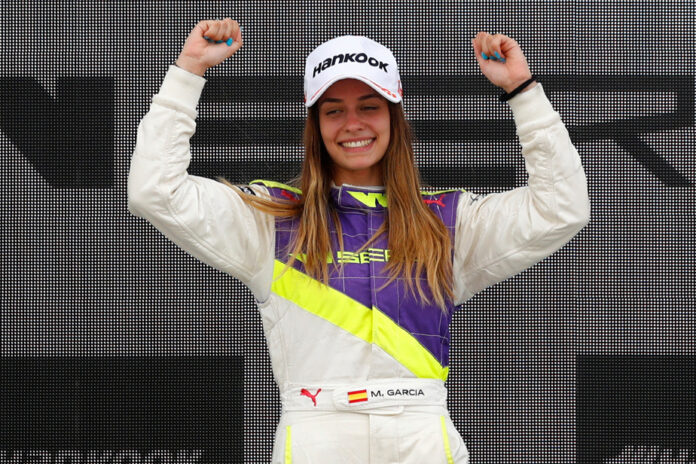(Paris) In need of diversity, Formula 1 is trying to become more feminine, driven by initiatives and competitions put in place to offer more chances for young women to access a discipline that is theoretically mixed, but in practice largely male.
In more than 70 editions of the World Championship, only two women have started a Grand Prix: Maria Teresa de Filippis in 1958 and Lella Lombardi in 1975 and 1976.
If their presence on the grid has questioned the environment for several years, the fact remains that, for almost 50 years, none of them has managed to join the elite as a starter.
At best, they remained in the shadows, playing key roles, like Susie Wolff, former test driver for the Williams team.
An absence that the Scot explains by the low representation of girls at the grassroots: “only a handful of young women practice this sport and are therefore capable of progressing”.
“So we need to increase the talent pool and for that we need to raise awareness and create opportunities. If we cannot get more women to compete, we will not achieve further progress,” she explains to AFP.
This is why in 2023, the discipline launched a competition reserved for women pilots. Called “F1 Academy”, it aims to take drivers to the upper echelons leading to the elite of motorsport.
Unlike this year, from next year, all seven rounds of this new championship will be organized during F1 weekends. In addition, each of the ten teams present in F1 will participate and nominate a driver, “a good thing”, judges Marta Garcia, first champion of the F1 Academy.
“This is what we need […] to show everyone that we are here and that we are piloting too,” continues the Spaniard.
The championship succeeds the W-Series, a competition that is also 100% female and which, due to lack of resources, ended in 2022.
But unlike the W-Series, “we are incredibly lucky to have Formula 1 behind us,” recognizes Wolff, since it is Formula One, promoter of the discipline, which is at the origin of the F1 Academy.
When its creation was announced at the end of 2018, several voices were raised against the organization of a 100% women’s championship, considered a false good idea. Pilot Sophia Floersch was notably very critical at the time, asserting that it was going “in the wrong direction”.
“I always think the same thing” about the F1 Academy, admits the German, the only woman entered this season in Formula 3, the antechamber of Formula 2, itself paving the way towards F1.
“At university, women and men study together, because it’s normal. In our sport it should also be normal for men and women to compete together…why do a series just for women? “, she asks AFP.
If women theoretically have access to all categories of motor racing, it is clear that they are significantly less numerous than men and that the gap widens as they climb the ranks.
Faced with this total imbalance, the teams are starting to move. Ferrari notably welcomed in 2021 the first young woman into its prestigious academy, the Dutch-Belgian Maya Weug.
Last year, Alpine announced it was launching a program aimed at increasing the role of women, particularly engineers and pilots. A decision welcomed by Floersch, member of the Alpine academy: “this is important support […] the objective is to bring more women into different areas of sport to change gender representation at Alpine”.
“There are a lot of efforts made,” recognizes Pierre Gasly. At 27, the Frenchman, in F1 since 2017, also assures that he would “not be surprised” to drive alongside a woman before the end of his career.
And for good reason, Susie Wolff says she wants to see it “by 2030”. Being the only woman to compete in all series (F3, F2 and F1), Sophia Floersch is currently in pole position to join the elite of her sport, within “three to five years” she hopes. -She.















